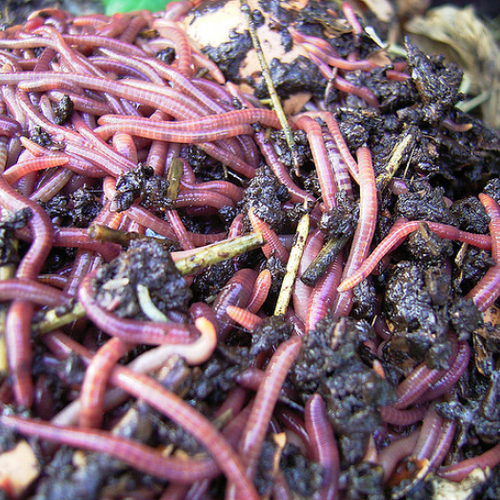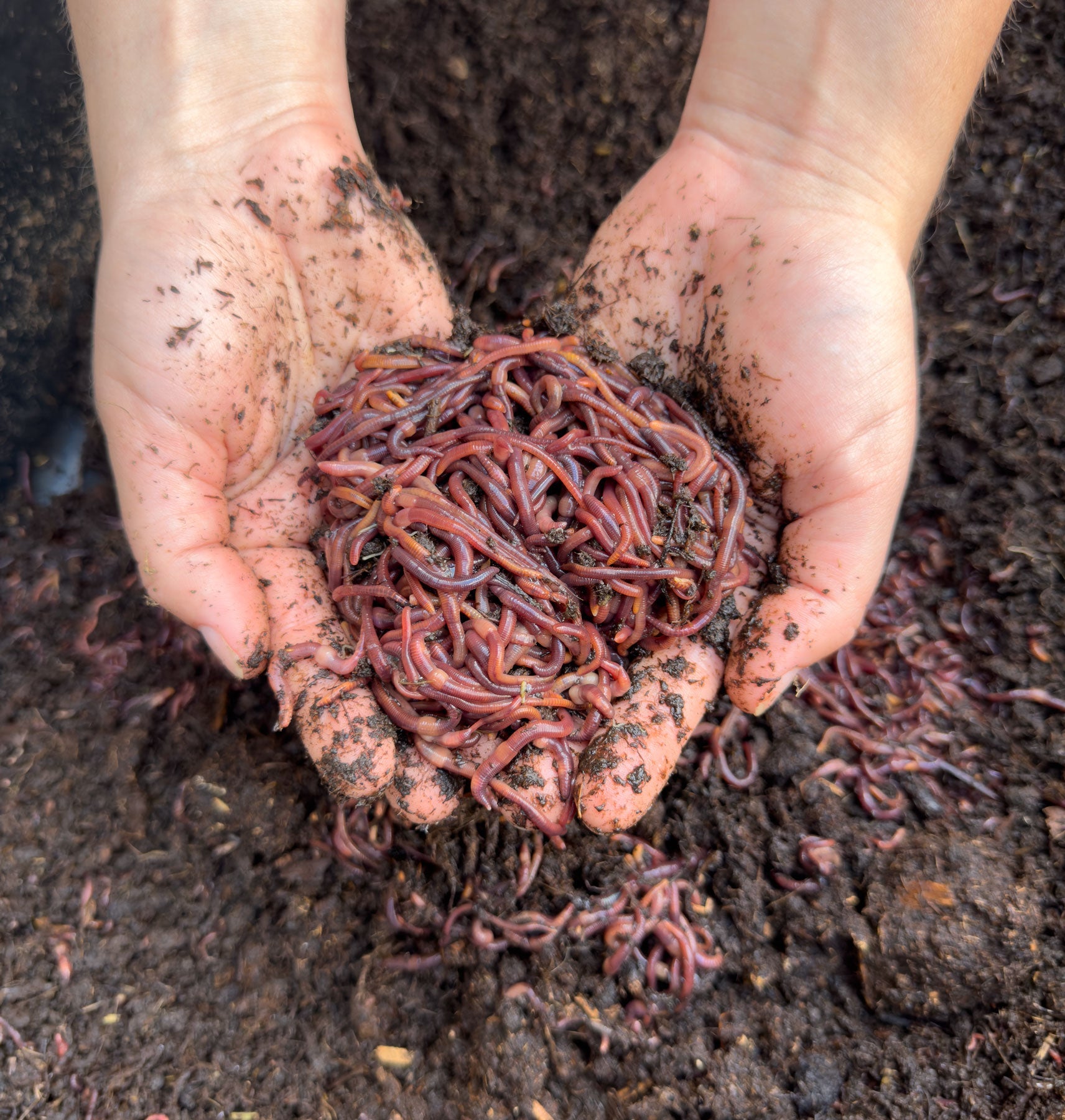Red worms: Easy care tips
Red worms: Easy care tips
Blog Article
The Function of Red Wigglers in Sustainable Gardening
The assimilation of red wigglers right into sustainable horticulture techniques provides a compelling strategy to boosting dirt health and lowering natural waste. These organisms not just convert kitchen scraps right into nutrient-dense compost via vermicomposting however likewise aerate the dirt, advertising optimal problems for plant growth. As they damage down complicated natural materials, they proactively promote a flourishing microbial ecosystem crucial for sustainable farming. Nevertheless, the implications of making use of red wigglers prolong past simple composting; their duty in forming an extra sustainable future warrants a much deeper exploration of their advantages and practical applications.
Understanding Red Wigglers
Red wigglers, clinically called Eisenia fetida, are a species of earthworm renowned for their role in sustainable horticulture and composting techniques - red wigglers. These worms thrive in breaking down raw material, making them particularly efficient in converting cooking area scraps and backyard waste into nutrient-rich compost. Unlike conventional earthworms, red wigglers have a higher tolerance for varying moisture levels and can grow in settings with bountiful natural product
(Western North Carolina Worm Farms)Typically, red wigglers are smaller sized than their earthworm equivalents, typically gauging in between 3 to 4 inches in length. They have a reddish-brown pigmentation and have a fractional body structure that helps in their burrowing and feeding activities. These microorganisms are hermaphroditic, indicating each individual has both male and female reproductive body organs, which allows for reliable population development under optimal problems.
The habitat choices of red wigglers include damp, dark environments rich in natural material, such as garden compost bins or worm ranches. Their eco-friendly duty extends past composting; they are integral in aerating the dirt and helping with vitamins and mineral cycling, which eventually adds to healthier garden environments. red wigglers. Understanding the biology and habits of red wigglers is crucial for those looking for to apply efficient vermicomposting in lasting gardening
Benefits of Vermicomposting
Vermicomposting deals numerous advantages that boost lasting gardening methods and add to ecological health. One of the main advantages is the transformation of organic waste into nutrient-rich garden compost, which boosts dirt structure and fertility. The castings created by red wigglers are loaded with beneficial bacteria and necessary nutrients, making them an excellent natural fertilizer.
Furthermore, vermicomposting dramatically lowers landfill waste. By diverting kitchen scraps and lawn waste from garbage dumps, this technique not just decreases methane exhausts-- a potent greenhouse gas-- but also promotes a round economic climate, where waste is repurposed as a resource.
Another advantage is the enhancement of soil aeration and drain (red wigglers). The burrowing activity of red wigglers produces channels in the soil, enabling air and water to permeate more easily, thus fostering a much healthier origin system for plants
In addition, vermicomposting can be done on a tiny range, making it accessible for urban garden enthusiasts and those with minimal room. This technique motivates environmental stewardship and awareness, as individuals come to be extra involved with their waste administration methods. Ultimately, vermicomposting represents a lasting, effective, and environment-friendly technique to gardening that profits both plants and the earth.
Just How to Begin Vermicomposting
Starting your very own vermicomposting system can be a fulfilling venture that improves your lasting horticulture practices. To start, choose a proper container, such as a plastic bin or wood box, with great drainage and air flow. The size will certainly depend upon the volume of cooking area scraps you generate; a bin of 10-14 gallons typically is enough for a home.
Following, prepare the bed linen material. Shredded paper, cardboard, and coconut coir are outstanding options, supplying a comfortable habitat for the red wigglers. Go for a bedding deepness of about 4-6 inches, which need to be damp but not soaked.
Once the bed linens is established, present your worms. Red wigglers (Eisenia fetida) are the most appropriate for composting. Start with around one pound of worms for each 2-3 extra pounds of cooking area scraps weekly.
Begin adding kitchen area waste, avoiding meat, dairy products, and oily foods, as these can bring in insects and develop odors. On a regular basis keep track of the container's moisture levels and temperature level, ensuring it stays within the excellent range for worm activity. With these first steps, you'll be well on your means to creating nutrient-rich compost for your garden.
Preserving a Healthy And Balanced Worm Container
A flourishing worm container calls for consistent care and focus to keep an optimal atmosphere for the red wigglers. Secret variables to monitor include wetness degrees, temperature level, and food supply. Keeping a moisture level similar to a wrung-out sponge is vital; excessive water can result in anaerobic conditions, while inadequate can dry out the worms.
Temperature level is additionally essential, as red wigglers thrive in a variety of 55 to 77 degrees Fahrenheit. Extreme temperatures can worry the worms, possibly causing death. Placing the container in a climate-controlled location or making use of shielding products can assist control temperature fluctuations.

Finally, oygenation is crucial. Frequently turning the bed linens and utilizing a fork or shovel can prevent compaction and advertise air flow, ensuring a healthy and balanced, thriving setting for the red wigglers. By adhering to these techniques, gardeners can keep an efficient worm container that supports lasting gardening initiatives.
Effect On Dirt Health
Enhancing dirt health via making use of red wigglers is an essential element of sustainable gardening. These worms, known scientifically as Eisenia fetida, play an essential duty in improving dirt structure and fertility. By taking in raw material, red wigglers break down complex materials right into simpler compounds, a procedure called vermicomposting. Completion item, worm castings, is rich in important nutrients, consisting of nitrogen, phosphorus, and potassium, which are important for plant development.

(red worms for composting)Studies have actually revealed that soils enhanced with worm spreadings show increased microbial activity and enhanced fertility, bring about greater crop yields. By integrating red wigglers right into horticulture techniques, garden enthusiasts not only enrich their dirt yet also contribute to a much more sustainable farming system, highlighting the interconnectedness of dirt wellness and ecological stewardship.

Conclusion
To conclude, red wigglers dramatically add to lasting horticulture with their effective vermicomposting practices. Their ability to convert natural waste right into nutrient-rich compost boosts soil fertility and supports a varied microbial ecosystem. Their burrowing activity boosts soil oygenation and water retention, benefiting plant health and wellness. By advertising waste decrease and fostering a round economy, red wigglers become essential elements in environment-friendly gardening initiatives, highlighting their vital function in ecological sustainability.
Report this page